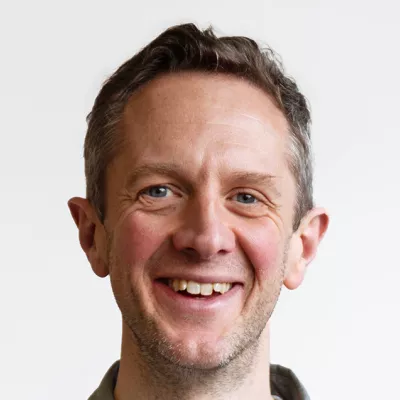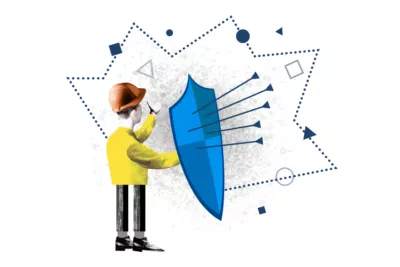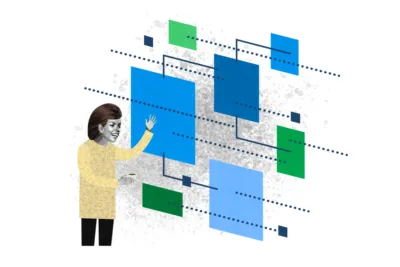25 Oct 2023
How businesses excel by prioritising for growth

We spoke with many organisations for our upcoming White Paper on how businesses prioritise well so they can stay customer centric in challenging times. Here we share detailed insights from our conversations with Visa, Octopus Energy and SSE.
-
Stuart Tayler
Practice Director

At the end of 2022, we were keen to understand how an impending recession may affect organisations and their ability to remain customer centric. We knew that resources – money, people, time – were likely to be more scarce, and so we predicted that prioritisation was going to be key. So, our research question became “How do you prioritise well”?
Using surveys and interviews, we spoke to around 25 organisations – across energy/utilities, financial services, public services, retail and telecoms. We wanted to learn how businesses and their people prioritise to thrive in the face of uncertainty.
Through our conversations and survey results, we observed three main strategies for prioritising work (1) Playing it safe, (2) Sticking to your guns, and (3) Breaking it down.
In our upcoming webinar, as part of Customer Centricity Month 2023, Stu will be diving into these strategies in more detail and will show how, for all three, customer insight is key to success. Our guest speaker, Max McShane from Octopus Energy will then discuss some of the strategies they use to stay competitive and show how firms can get the best out of these strategies through a shift in culture.
Sign up now to secure your place.
As part of our research, we interviewed many organisations. Read on for detailed insights from our conversations with Visa, Octopus Energy and SSE.
Visa
The team at Visa take the ‘Stick to your guns’ approach. We caught up with Andrés López Josenge, Global Head of Product Design at Visa to hear more about this.

López described how, at the beginning of the financial year, Visa spend about a month considering what to work on. They map that out and stick to it throughout the year. But they do have to be ready for the unexpected. As López explained, “There can always be a curveball that kind of flies midway. But in general, we’ve got a good idea of what will be our focus points this year.”
Once the priorities are set, they work on the overall themes. Then they work on the goals and the Objectives and Key Results (OKRs). These are then cascaded through the teams.
Despite having a freeze on spending this financial year, Visa hasn’t cut back on the initiatives they’re undertaking. Instead, they have had to adjust and make do with their constraints, be more creative and bring certain functions in-house instead of relying on agencies. López said, “We get creative and we start doing things ourselves. We flex to do that or we just stagger it in a way that will allow us to work around it.”
When they carry out initiatives in-house, López says they need to allow a bit more time and be more flexible and realistic about how much can be achieved. This also requires educating other stakeholders about what’s involved in design and how long things will take.
Akin to the university model, everyone at Visa has a ‘major’ that they work on for around 3.5 days a week, and a ‘minor’ that they work on for the rest of the week. By not working on one thing all the time, they “shake it up and keep it fresh”, says López. This approach also allows them to factor in new initiatives.
When a new project is just starting, a person might start with this as their minor and it ends up growing into a major. In López’s words, it’s “very organic.”
López’s advice to other organisations about how to do prioritisation well is to ‘be patient’. Concerning shifts in the market, he said, “Be patient…Things work out in the end.”
Octopus Energy
One organisation that exemplifies the ‘Break it down’ approach is Octopus Energy. We spoke to Max McShane, Head of Digital, who explained how they apply it.

Rather than running large annual planning cycles, Octopus Energy’s senior management team meets every Monday. McShane said that in this meeting, they look at “What’s happening in the world, in the industry, the press, internally and set some top priorities of what we want to tackle. Then they go away and cascade this down so that everybody in the company knows what the top priorities are.”
They strive to get products out as quickly as possible so they can test and iterate. As McShane said, “A lot of the products we do is just putting it out there and getting the response rather than sitting in a room and trying to make it perfect.”
At Octopus Energy, when someone has an idea, McShane says that they set out to make it a reality as quickly as possible and to “learn from it in the open”. This makes conversations with clients easier because there’s already a proof of concept.
McShane told us how Greg Jackson, their CEO, talks a lot about ‘Parkinson’s Law’ – the observation that work expands to fill the time available to complete it. So as a method of prioritisation, Octopus Energy keep deadlines short to keep people focused on what’s important and easy or what’s important and necessary.
Octopus Energy has a team that specifically looks at growing long-term domestic accounts, business accounts or partnerships. They also have a strategy team looking at growth globally. McShane explained that they consider the state of the market in each country and the competition. Once they’ve decided it’s a “good stable place” where they can grow, they will identify small businesses that they can acquire. Rather than seeking out businesses who want to take the money and run, McShane said they want “people to join, who are passionate about what they’re doing and to join the mission and see us as an opportunity to boost them”.
SSE
Another example of an organisation that is breaking down larger investments is SSE. We spoke with Robert Short, Head of Digital who told us that adopting an Agile mindset is a more recent shift, driven in part by Covid. So, rather than signing off on an investment for 3-5 years, they are asking teams “What can you do this year? What can you build and launch as live? Can we see how we get on, and adapt at that point”?
SSE has a clear strategy and vision that they are trying to achieve and there is clarity around this, this is long term and looks out to the future. Business leaders and their teams plan initiatives around the outcomes that are aligned to the strategic goals. Everyone has accountability for strategic delivery breaking down these initiatives, which are worked through by product and delivery teams with regular syncs on alignment.
Although the broad vision of what they’re trying to achieve remains fixed, how it’s achieved is iterated depending on what’s going on in the market. Short says that they strive to “adapt to constant changes in the market to deliver the best experiences for our customers.”
To do so, SSE breaks their work into small experiments and ensures they’re the right experiments by gathering both qualitative and quantitative customer data.
They have regular planning cycles aligned to budget cycles which are reviewed against changes that happen externally or based on business or customer outcomes. Importantly, there’s still flexibility to ask for a separate budget ad hoc if there’s a great opportunity.
Breaking down bigger ambitious things into smaller chunks enables SSE to launch more quickly. Using existing tech and building into it also allows them to deliver rapidly and provides insight around future use cases.
This is useful when it comes to regulatory change. Short noted that “regulatory change is really important and takes priority in planning, but it can still be broken down and delivered in different ways.” It also presents opportunities to be innovative in the solutions used to achieve the outcomes needed.
Join our webinar
To learn more about strategies for prioritisation, join us for our webinar – ‘Staying competitive in challenging times’ with Stuart Tayler, Practice Director at cxpartners and Max McShane, Head of Digital at Octopus Energy. This will be the first in a series of five webinars focusing on prioritisation.
n this session, we will review some different strategies for prioritising work – from “playing it safe” to “sticking to your guns” to more extreme approaches to agility. We’ll look at how different organisations have applied the strategies and the things you need to consider if you adopt them. Above all else, we will show why customer centricity is key and show you ways you can bring it into every strategy.
When: Wednesday 1st November 11 am – 12 pm



